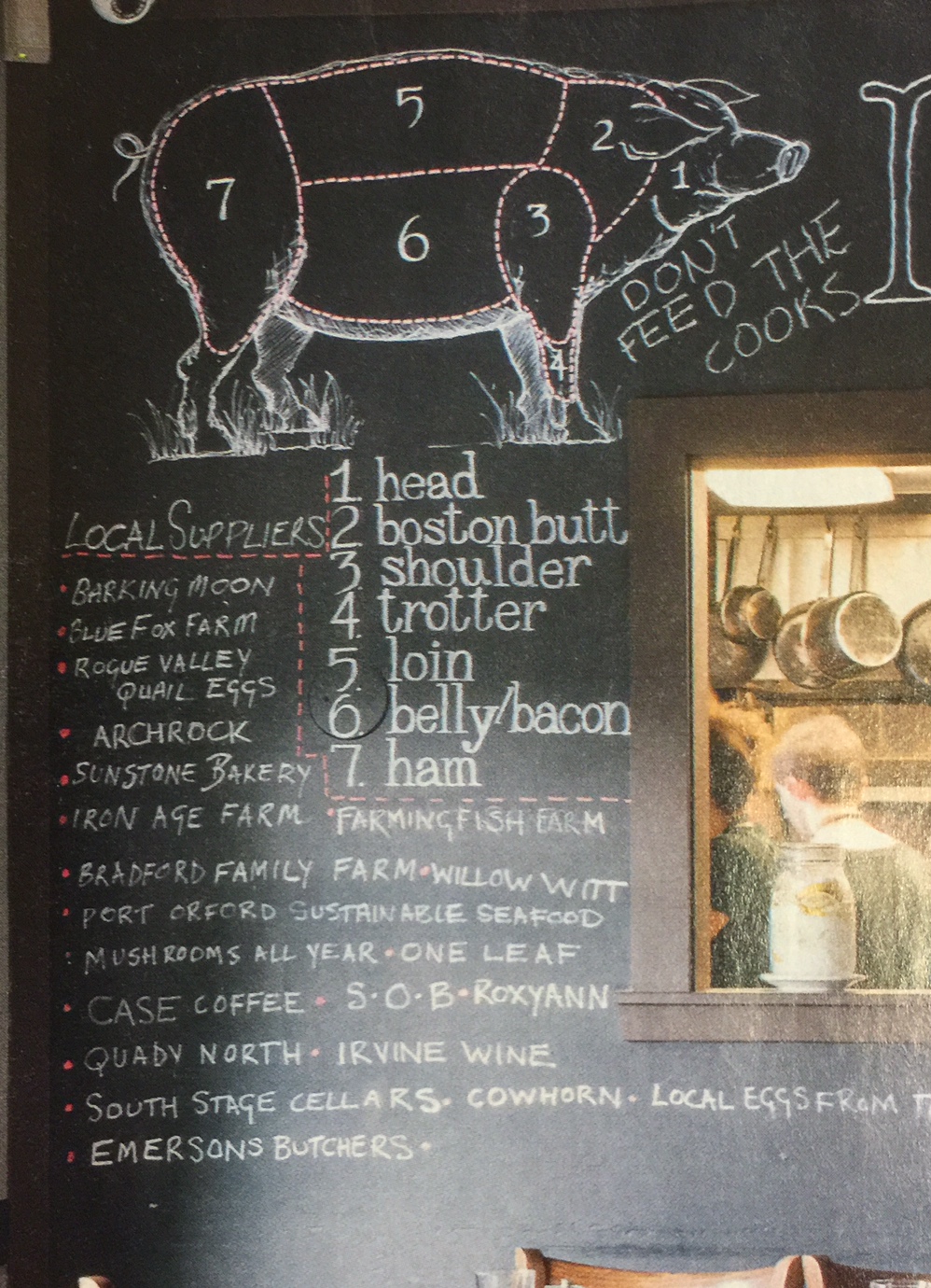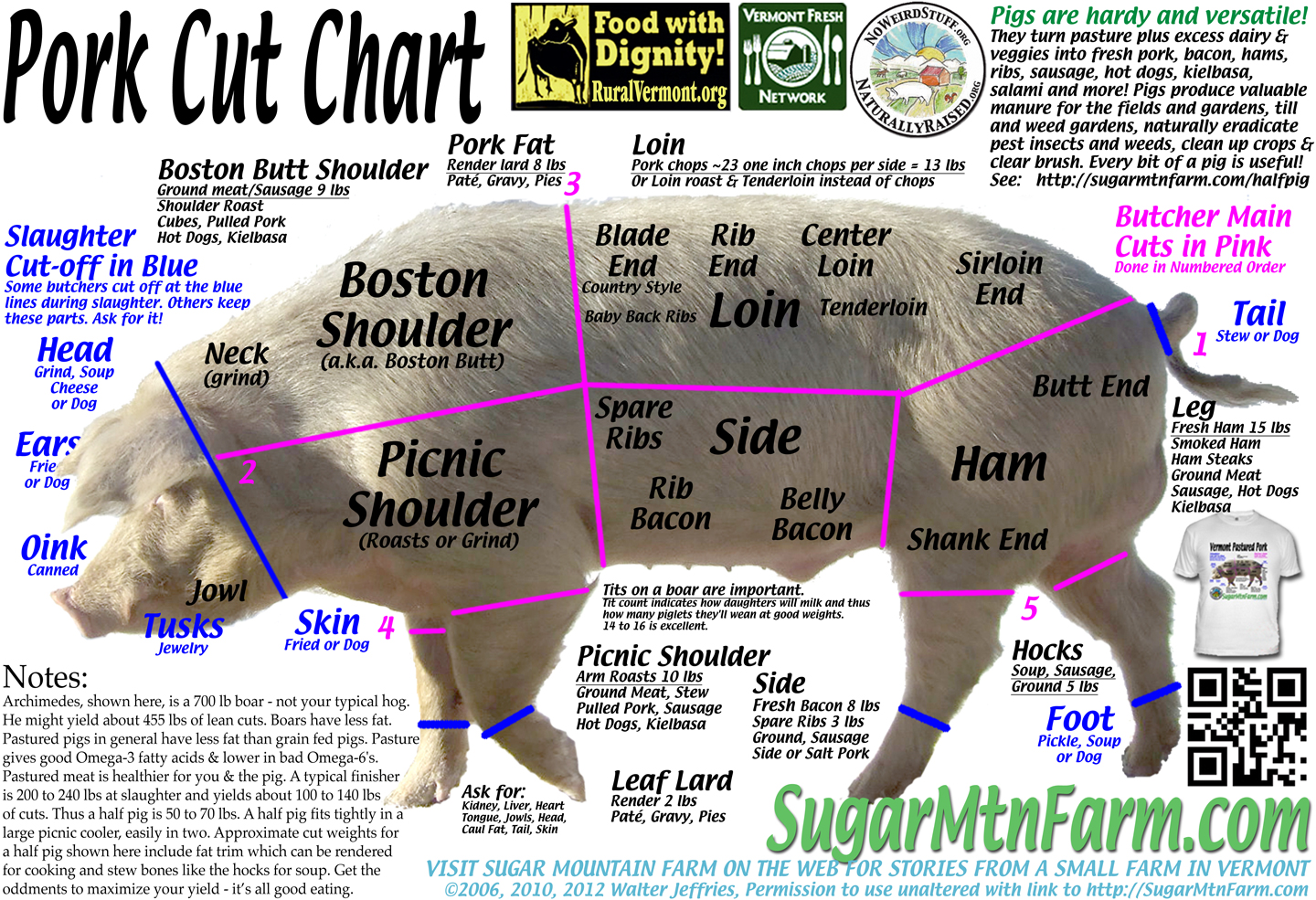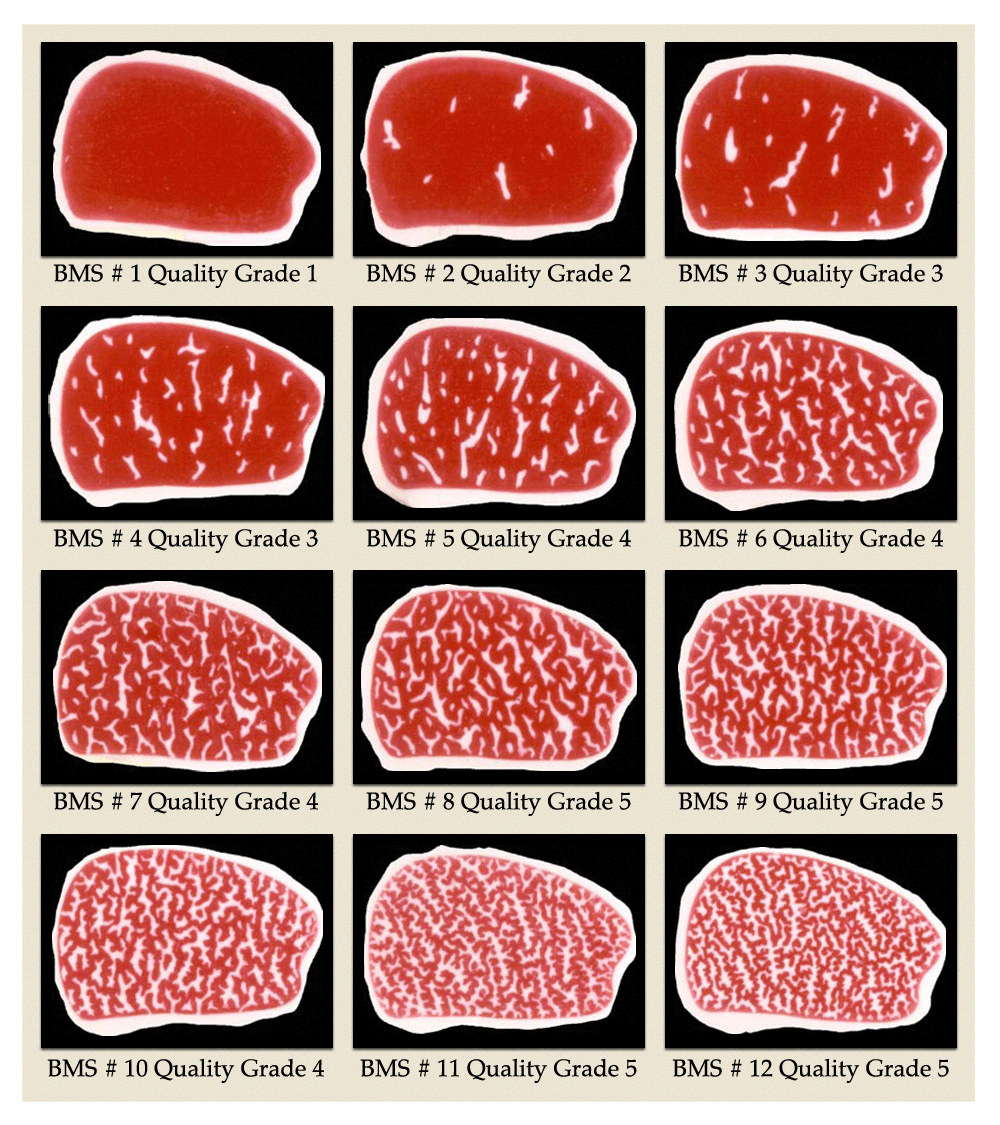CLICK HERE for cuts from other animals
From America’s Test Kitchen and Sugar Mountain Farm.
 Ever wonder where Ham Hocks come from? What’s the difference between the ribs and the spare ribs? What’s the difference between the loin and the center loin?
Ever wonder where Ham Hocks come from? What’s the difference between the ribs and the spare ribs? What’s the difference between the loin and the center loin?
Here is a picture and an explanation of the Pig Parts and how to use them.
- The buttocks are salted and pressed in order to eventually produce ham.
- The ribcage meat is salted and smoked in order to get bacon.[6] Salt is rubbed thoroughly into each piece of meat and all surfaces are covered. Some formulas also include lots of black pepper. The bulk of the meat is cut and ground to produce various sausages, which are traditionally wrapped into the intestines of various sizes.[6]
Schematic representation of the main pork cuts.
The bulk of the fat is cut into small pieces. Some of it is fried to produce cracklings. Lard is made by rendering – heating fragments of fat in a large iron pot over a fire until it is reduced to simmering grease which congeals when cooled.[6] Lard is then stored in lard tins with tin covers. The typical tins in the US are five gallons.
The intestines are stripped by drawing them through a clenched fist. They are then washed, cut into short pieces, and fried to make chitlins.
The various “leftovers” are put into various forms of headcheese jelly, etc. Most parts of the pig are used in this traditional process, even parts of the skin that would normally be thrown away are preserved to be cooked with beans.
The smoke house is essential for the preservation and long term storage of hams, shoulders, bacon sides, and pork bellies. The meat is hung on racks and hooks in the smokehouse; and later smoked. Fragrant hardwood, such as hickory, beech, or cherry is allowed to smolder slowly in a pit below the hanging meat. This gives added flavor and color to the meat as well as serving to dry cure the pork.
Here is another bit of information:
Pork Cuts – Where do they come from?
Where does the meat come from?
Ham – front and back legs up to the haunches
Butt – from the shoulder
Pork loin – the top of the back near the rear of the pig
Loin ribs – Same as baby back, but closer to the rear
Baby back ribs – ribs nearest the spine
Spare ribs – ribs just outside the baby back ribs
St Louis ribs – the tips… past the spare ribs
Instructions
Spare ribs are a bit tougher so take longer to cook, but contain more meat.
Baby backs are faster cooking, more tender and take flavors well
Vaccuum packed ribs will keep in the fridge for 2-3 weeks
Info from Alton Brown

